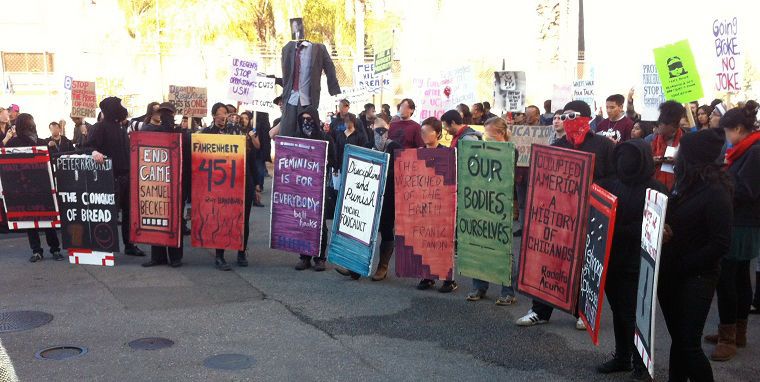In Reclamations Journal, Issue 6.
View Online
Zach Blas: Can you start by giving a brief overview of the various practices–such as, electronic civil disobedience, hacktivism, and electronic disturbance–that you’ve engaged with throughout your times as an artist and activist? With your hire in the Visual Arts Department at UCSD, how do bringing these practices into the university affect not only how you deploy and enact them but also conceptualize them? Your virtual sit-ins have been in tension with universities in the past; what are your thoughts on the existence of these practices within a university context? What pedagogic functions do you see them performing?
Ricardo Dominguez: CALIT2 and the Visual Arts Department at UCSD offered me an assistant professor position that would allow me to continue my artivist research at a new level in 2004. I felt that it would be worth the effort to investigate doing Electronic Civil Disobedience, border disturbance art, and nano-political interventions within an institution–a core research question would be: what would ECD mean happening from a university?; what would be added to the work; and could it be used against the institution itself? UCSD offered me a stable research base to do work from and a place to continue developing gestures that would push the work beyond what we had achieved with Electronic Disturbance Theater (EDT), which was based on ideas that I had been working on/toward in the 80’s with Critical Art Ensemble (in Tallahassee, Florida) and in the 90’s with thing.net in New York City. During the 90’s, EDT established the gesture of Electronic Civil Disobedience–and a great deal of knowledge came from these performances on a global scale.

